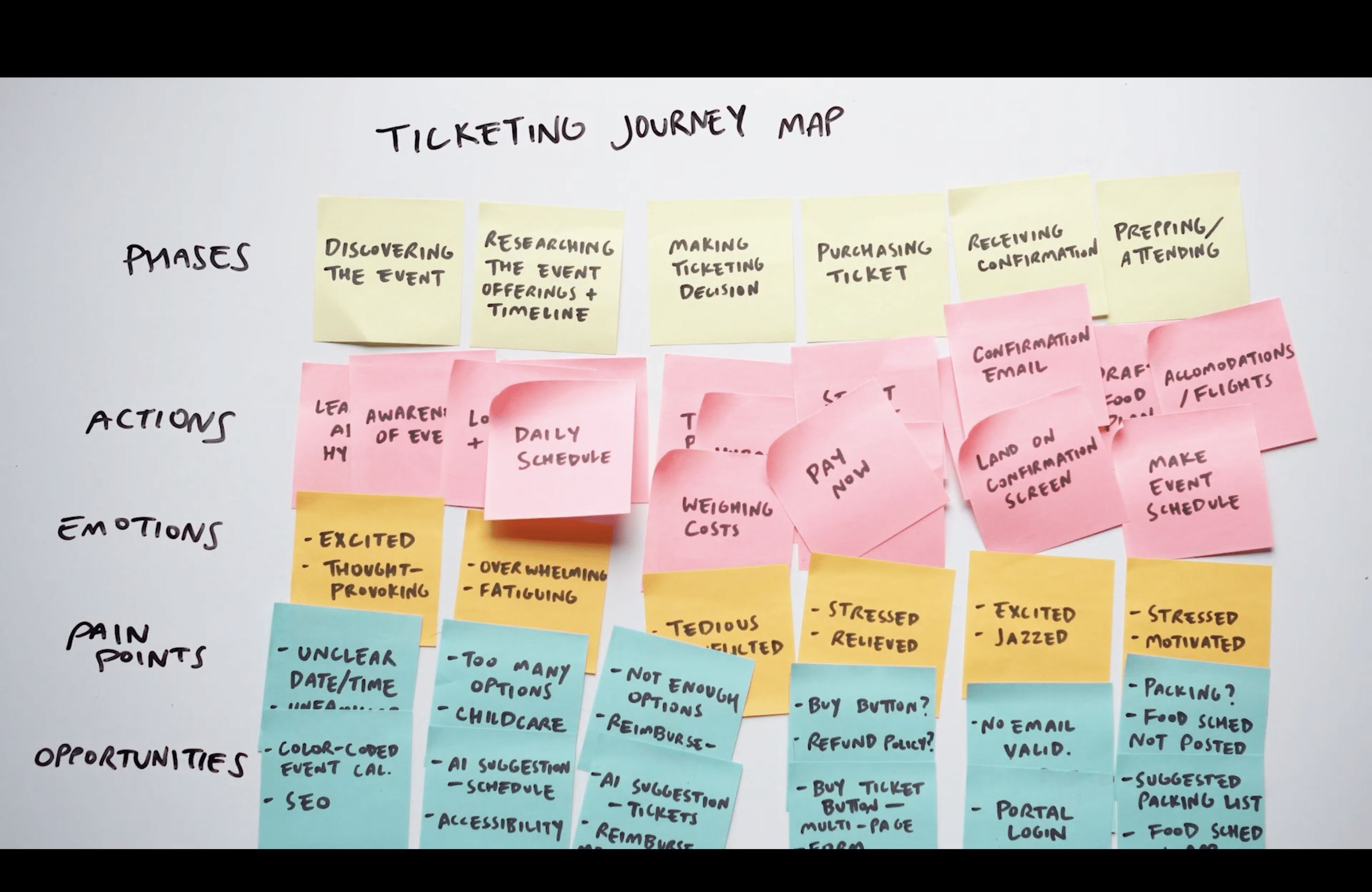Hot Topics in Tech with Jon Riley: Blog Series Menu
Arts and culture nonprofits preserve the cultural heritage that develops creative, rich community life. Broadly speaking, nonprofit sectors suffer from resource scarcity, changed audience expectations, and the pressure of remaining relevant in the digital age. Service design, with its human-centered approach to the creation or enhancement of services, is a source of several key tools in surmounting these challenges.
Arts and cultural nonprofits that deeply listen for the needs, feelings, and actions of their stakeholders are more able to create far more meaningful, accessible, and engaging experiences.
This blog explores three ways service design can innovate in the arts and culture space.
Hot Topics in Tech (Part 4): Service Design for Nonprofits
What is Service Design?
Service design is a multidisciplinary field focused on creating and improving services to make them more user-centered and effective. It involves a variety of activities that span research, ideation, prototyping, implementation, and evaluation. Below is a detailed list of key activities in service design, categorized by phase:
Today, we will focus on just three of these. Journey Mapping, Inclusive Design, and Impact Assessment.
1. Engaging a Larger Audience
Arts and Culture organizations all seek to reach and deeply engage with their communities. Using Journey Mapping as a service design framework allows organizations to develop a map of the entire journey a community member engages in, from awareness of an event, to attending the event, and reflecting upon the event after the fact. This can be achieved through pinpointing pain points and opportunities, allowing the organization to develop a seamless and enjoyable experience for their audience.
Implementation:
- Journey mapping builds a detailed map of a user’s interaction with the organization in stages, including discovery, engagement, and post-event reflection.
- Pain Point Analysis establishes what hurdles exist for the service, such as incomprehensible ticket purchase procedures, unreachable information on venues, or post-event lack of engagement.
- Iterative Improvement: This is especially important if the event is annual or will happen again in the future. Learning from what worked and what didn’t through post-event surveys and engagement will help your organization improve in the future. Many times, you can learn from your peers here as well.
2. Making Access More Affordable:
Designing for the general user will often leave out those at the margins. Service design as a conceptual field-with its emphasis on co-creation and empathy-particularly lends itself to the development of inclusive solutions. Below are some ways to incorporate inclusive design into your general practice.
Implementation:
- Inclusive Design: Engage in design activities involving underrepresented groups, including people with disabilities, foreign language speakers, and people from low-income communities. To push for inclusive design, know their specific needs and create intentional personas in your process.
- Accessible Programming: Offer tiered pricing models, free or pay-what-you-can events, and sensory-friendly performances that meet the needs of a diverse audience.
- Multilingual and Accessible Materials: Translations, audio guides, and sign language can be provided to ensure access for all.
Example:
Consider a not-for-profit museum creating an exhibit that would be accessible to people with low vision. In being included within the design process, the museum could include hands-on exhibits, audio descriptions, and braille labeling, creating a multi-sensory interactive experience.
3. Enhancing the Volunteer and Donor Experience.
Volunteers and donors are the lifeblood of most arts and culture nonprofits. Where their experience is as rewarding and frictionless as possible, the relationships will be stronger and their support will be more sustained. Service design can optimize these interactions to focus on their motivation, pain points, and desired outcomes.
Implementation:
- Custom Onboarding: Design an onboarding that will train and motivate your volunteers and donors, be it through virtual tours of the impact of an organization or a personal story of beneficiaries.
- Digital Tools: Provide accessible platforms for scheduling volunteer shifts, tracking donations, and showing real-time impact.
- Continuous Involvement: Allow service design to create personalized moments of contact by thank-you notes in person, early access, or even behind-the-scenes event invites to new programs.
Example:
A performing arts nonprofit could utilize a mobile app to allow volunteers to sign up for shifts, track volunteer hours, and/or receive real-time notification of the impact of their work. Donors could utilize the same mobile app to find reports on projects they funded, to access testimonials, or otherwise to engage in impactful ways.
Conclusion: Moving On with Human-Centric Innovation
Service design allows arts and culture nonprofits to understand a sound methodological framework through which to meet the challenging demands and take advantage of new opportunities. Working from the needs and experiences of the audiences, supporters, and community in general, service design can create effective and meaningful services.
But this is less about a one-page test and more about a cycle of commitment: to empathy, to innovation, and then to iteration. Institutionalizing these principles within operations can successfully enable nonprofits to design experiences that move, inspire, and create enduring change. In an era of shortened attention spans, intense competition for limited resources, and rapid shifts across technology, art, and culture, arts and culture nonprofits are uniquely positioned to lead with creativity and compassion. Service design equips these organizations to reimagine their audience relationships and advance their missions with greater impact.
However, the road to change must ensure that arts and culture nonprofits do not lose their purpose. Service design and its human-centered innovation hold the key to making that happen, and to keeping the arts a vital, accessible, transformative force for future generations.

Jonathan Riley,
CultureSource Technologist-in-Residence, 2024
Telescope Vision LLC.


